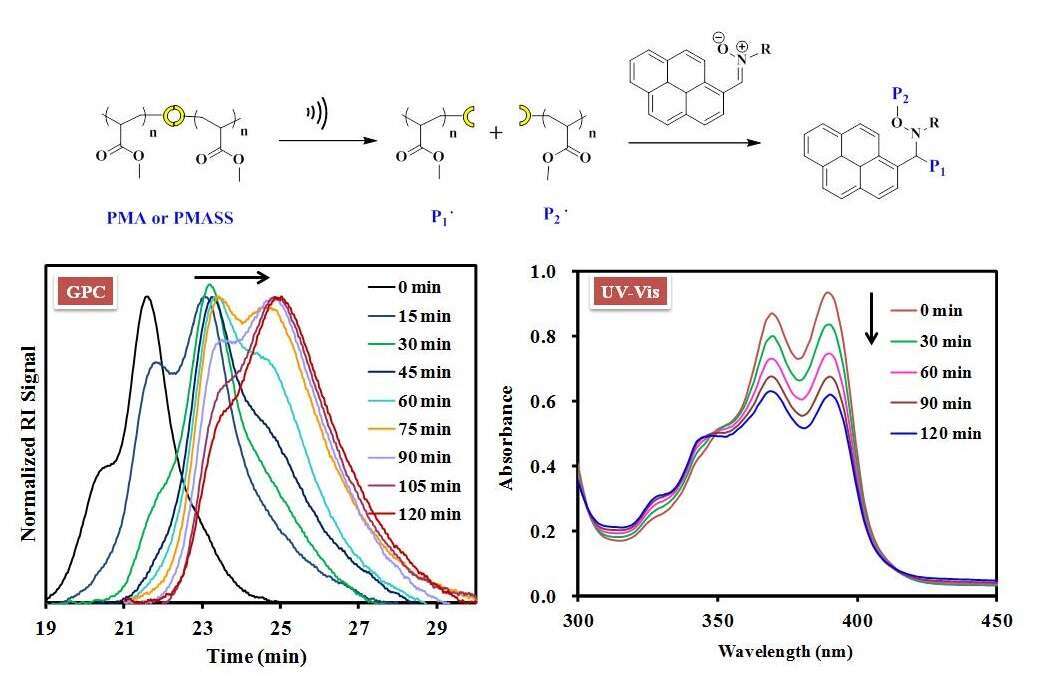
Following Homolytic Mechanochemical Kinetics with a Pyrenyl Nitrone Spin-Trap
The mechanochemical stability of a polymer is a fundamental parameter when choosing the ideal material for many different uses where mechanical stress may induce molecular weight reduction. The use of mechanophores has significantly improved the detection of mechanochemical reaction, but their incorporation to different polymers can be synthetically challenging. Alternatively, we return to the old strategy of using spin traps to quantify the radicals produced as a consequence of mechanochemical homolytic bond scission events. Several new spin-traps have been developed in recent decades, and pyrenyl nitrones have been shown to effectively bind radicals, providing a spectroscopic methodology to follow radical concentration. Here we demonstrate the use of these probes as excellent tools to follow mechanochemical depolymerization using online UV-Vis spectra. In order to confirm if the probe is really providing meaningful relative results between polymers, we compared the degradation rate constants calculated from UV-Vis spectra with that calculated from the molecular weight decay based on GPC traces. The rates show a direct correlation, indicating the probe is indeed providing correct information.

Powered by Eventact EMS